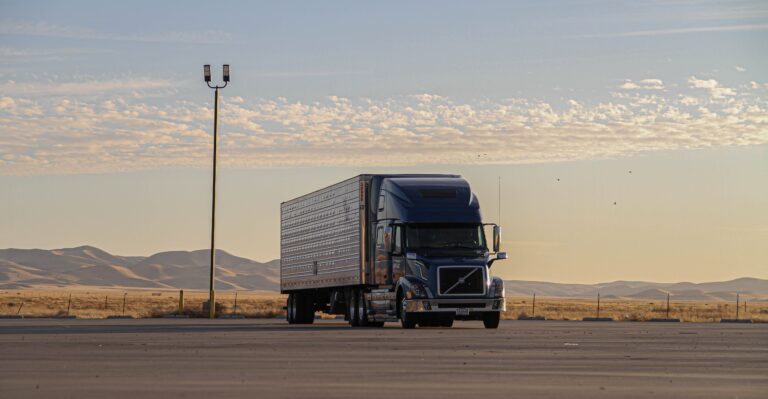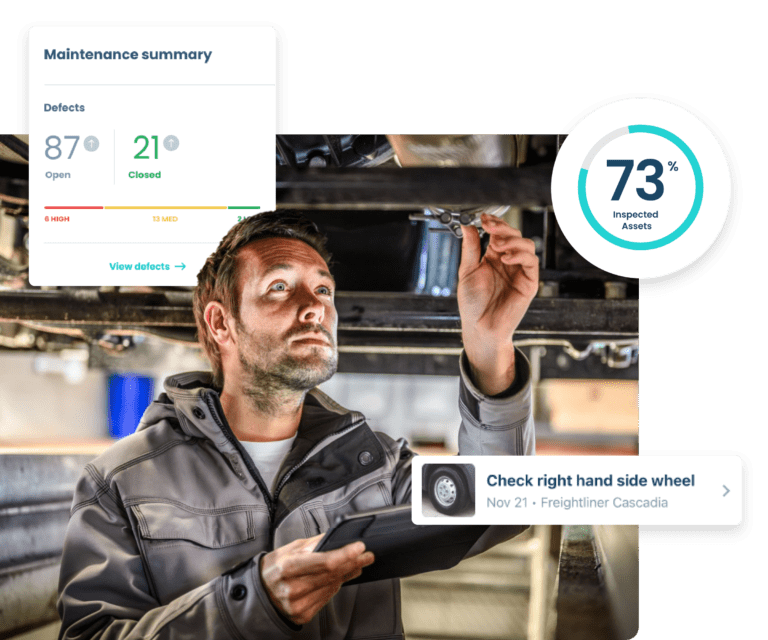Outside of technologies that we’re all keeping an eye on, like 5G —which will impact many fleets and the technology we depend on, there are a few trends worth paying attention to in the immediate future.
Even though many of these topics have been gaining steam for a while, the impact of 2021 (including political and pandemic-related ramifications) could accelerate their impact on your business.
To enable drivers, managers, and other members of your team to stay prepared for what’s ahead, we’ve identified 9 fleet management trends you shouldn’t ignore this year.
1. The explosion of e-commerce and the on-demand economy
According to research by eMarketer, e-commerce grew by more than 30 percent in 2020 alone, cramming nearly two years of growth into a single year.
The impact of this type of rapid growth has opened the door for many fleets to capitalize on more and more consumers flocking to e-commerce marketplaces, food delivery services, and other on-demand services that rely on a healthy fleet of vans and delivery vehicles.
This heightened growth is obviously due to several factors, but for Amazon’s DSP (Delivery Service Partner) program, as well as Fedex contractors and other last-mile delivery companies, business is booming.
It goes without saying that with such strong demand, the need for a first class inspections and maintenance solution should take priority in order to keep these vehicles in service.
2. An increased focus on health, safety, and well-being
The impact of COVID-19 has obviously changed how many industries hire, manage employees, and in the fleet management space it’s also impacted the way drivers and managers conduct day-to-day business operations.
This is especially apparent in the passenger transport space, and these health and wellness protocols also haven’t been ignored in trucking and other services-oriented industries involving vehicles and drivers.
One of the ways our customers at Whip Around have modified their process for drivers is by including health checks for drivers as a part of the vehicle inspection process each day. Even without a pandemic, features like these can help your team prioritize safety for all employees by encouraging feedback.
You can check out how to add these forms to your current inspection process here.
3. Fuel costs and electric fleets
With fuel prices falling in 2020 largely due to a lack in demand resulting from work-from-home policies being adopted and fewer Americans travelling, an increase in fuel prices is to be expected. This reality is already beginning to impact fleets and the entire supply chain, in addition to other unanticipated issues driving prices up.
Whether your fleet depends on either gasoline, diesel, or you require a combination of fuel sources, experts like Patrick DeHann, the head of petroleum analysis for GasBuddy, gas prices is still uncertain, and speculation could see prices return to previous levels.
DeHann said this in a recent report:
“With the coronavirus in the driver’s seat, 2021 looks to be a very uncertain year for gas prices with a wide range of possibilities. Add in President-elect Biden and the potential for new policy adding into the equation, we could see gas prices coming into 2020 like a lamb and leaving like a lion.”
EV fleets are on the horizon
Even though diesel prices plummeted in 2020, this hasn’t stopped some organizations from looking into electric fleet vehicles, especially in industries outside of trucking.
For an in-depth look at the future of EV fleets, check out our post 7 Ways EV Fleets Could Impact Trucking and Delivery.
4. A skilled labor shortage to increase focus on improving fleet maintenance
One of the realities facing many fleets in relation to fleet maintenance is an aging skilled labor market, which is expected to push maintenance costs higher over time.
Ryan Gardner, a corporate business development manager at Enterprise Fleet Management had this to say in Automotive-Fleet.com:
“The skilled labor shortage among automotive technicians continues to drive shop labor rates. During the pandemic, many technicians were protected from job loss because they were deemed essential workers, so there was little impact on the labor market for technicians. As more experienced technicians continue to transition into retirement and fewer young adults enter the field, shop labor rates will likely increase, especially in cities where technicians are in very short supply”.
5. More virtual industry events and online training opportunities
While much of the fleet management associations found themselves in a reactive position in 2020, expect to see more virtual training opportunities pop up in 2021.
Here are just a few fleet management events planned for 2021 you can take advantage of. While many will likely decide to offer virtual sessions, there is a growing list of fleet management events popping up as things begin to open back up.
- Work Truck 2021
- Mid-America Trucking Show
- 2021 TMC Annual 2021
- 2021 North American Commercial Vehicle Show 2021
- 2021 American Trucking Association Management Conference and Exhibition
Even with changes in format, it’s a good idea to connect with the industry associations in your area on Linkedin, EventBright, and other platforms for live virtual events your team can take advantage of.
6. Increased integrations with software and hardware vendors
One of the biggest leaps forward in 2021 will likely be in the software and hardware space. With telematics solutions expected to see a CAGR north of 20% by 2024, primarily due to their ties to cost savings, more and more organizations will likely adopt them with time.
For smaller organizations, the cost of installing or retrofitting fleets with technology may hinder adoption of some telematics solutions, however simple software and devices that can be installed without dependencies on expensive hardware are likely to flourish.
As an example, for fleets using the GeoTab platform and marketplaces, this makes it possible to integrate with dashcam vendors (or an industry-leading inspections and maintenance software like Whip Around), to keep everything connected in your ecosystem. Here’s a video below to explain:
For beginners, simply getting started with an easy to implement solution like Whip Around that specialize in one aspect of fleet management, you still leave the door open for adding any hardware that may be needed at a later time (like an ELD) due to integration capabilities and an open API.
The fleet management technology ecosystem
While bundled solutions don’t often provide great software in certain areas like vehicle inspections, the ability to integrate data when needed from industry-leading solutions like Whip Around (for DVIRs) is easily enabled through integrations.
Even though vehicle tracking and telematics solutions have been in use for quite some time, one of the challenges for cutting costs and gaining efficiencies will be to integrate these systems together in a way that allows decisions to be made in a non-siloed way.
7. New FMCSA regulations for motor carriers in 2021
If you currently operate as a motor carrier subject to FMCSA regulations, one thing to watch for in 2021 (considering likely changes at the federal level) are trends in the types of regulations likely to affect carriers.
One proposition poised to go into effect soon is the addition of underride guard inspections in the annual inspection process for trucking companies as explained by Heavy Duty Trucking.
Environmental and safety rules may be another area to pay attention to with a new administration according to Bill Sullivan, EVP of Advocacy for the American Trucking Association (ATA) in a recent Fleet Owner article:
“Generally speaking, if there is a change in administration, Democrats tend to be more supportive of regulation, especially environmental and safety rules,” says Sullivan. “ATA can and does support regulatory efforts in these areas, provided they are backed by strong data. We will work with either side because trucking is bipartisan—we will support policymakers who support us.”
8. Increase in off-site DOT audits
Due to the changing nature enforcement tools, one trend that is likely to continue in 2021 and beyond is the increase in off-site compliance investigations (DOT Audits) for motor carriers.
According to FMCSA data, over a 500% increase in off-site audits occurred between 2019 and 2020 as we recently explained in our webinar all about DOT Audits you can watch here.
Regardless of pandemic-related reasons for this trend, remote audits are becoming more common due to the fact they are more efficient and cost-effective to conduct, mainly due to advances in technology.
9. Video telematics
In the area of telematics, one of the advances likely to continue to pick up steam in 2020 is the ability for video telematics solutions to help prevent crashes, as well as provide evidence in the event of a crash for insurance and liability purposes.
The ability to exonerate a fleet in court is one of the biggest benefits to this type of technology, as illustrated in the video below:
How Whip Around helps organizations stay prepared for the future
No matter the challenges faced throughout the year, taking the time to implement a system that will allow you to remain organized operationally is key.
With so many moving parts, one of the ways Whip Around can help is my starting your team off with an inspections and maintenance application that can accommodate the growth of your fleet over time.
To learn more about why Whip Around is so critical for companies looking to ditch paper forms and stay organized in trucking, passenger transport, delivery, and numerous other verticals, contact us to learn more, or request a demo today.







